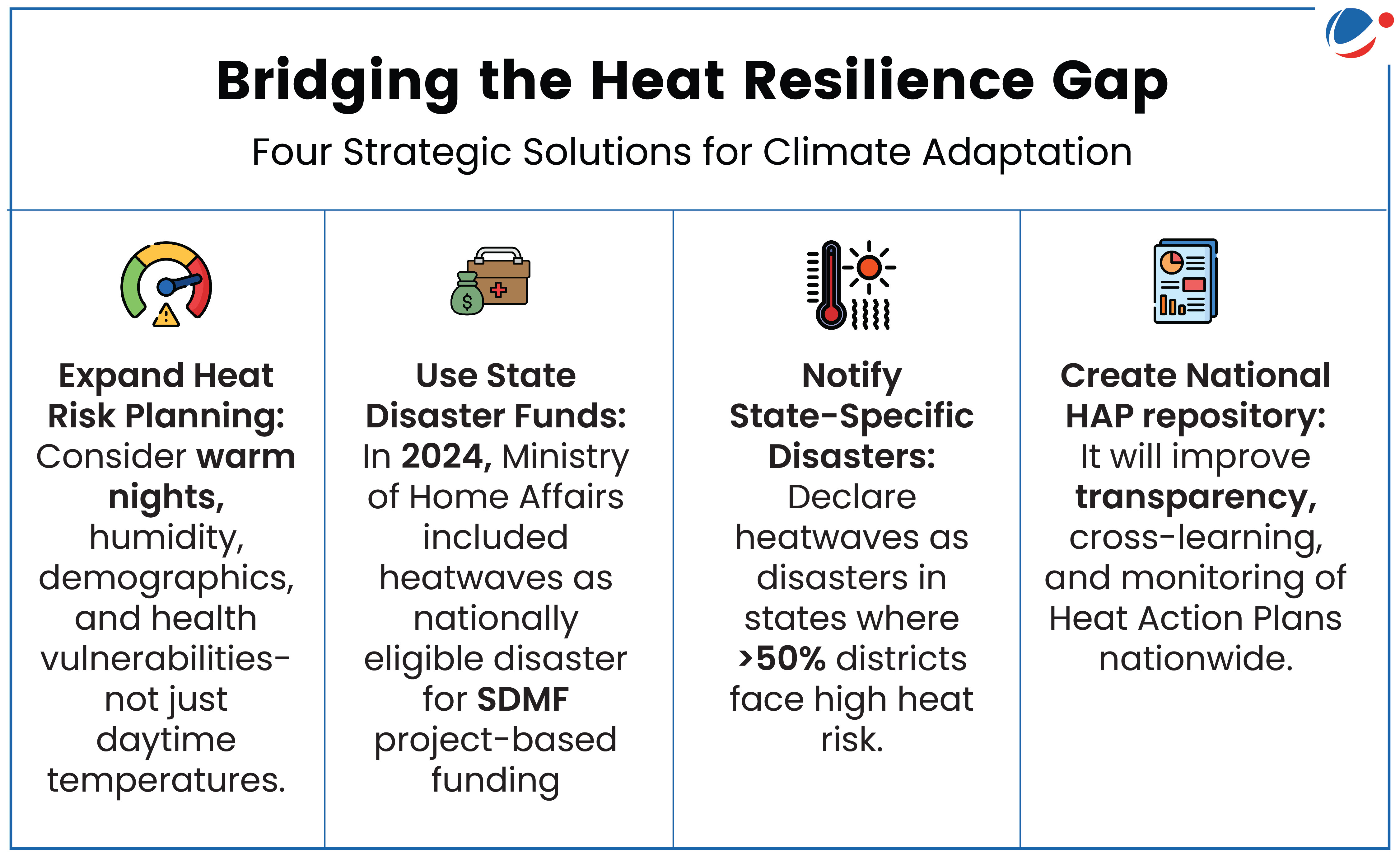The study, ‘How Extreme Heat is Impacting India: Assessing District-level Heat Risk’, carried out by Council on Energy, Environment (CEEW), assessed heat risk across 734 districts in India.
Understanding Heat Risk vs. Heatwaves and Heat Stress

- Heatwaves: These refer to prolonged periods of abnormally high temperatures in a specific region (e.g., plains, coastal areas, hills).
- Heat Stress: Occurs when the body temperature rises beyond 37°C, leading to discomfort, cramps, and potentially fatal heat strokes.
- Heat Risk: Refers to the probability of experiencing heat-related illnesses or death due to exposure to extreme temperatures. It depends on:
- Intensity of Heat (compounded by humidity).
- Degree of Exposure.
- Vulnerabilities of affected communities.
Factors Driving Heat Risk
- Increase in Warm Nights (2012-22): Frequency of very warm nights increased faster than that of warm days.
- It’s concerning as higher temperatures during night make it difficult for body to cool down after intense daytime heat, leading to a rise in heat strokes.
- Increase in Humidity in North India: North India's humidity rose from 30-40% (1982-2011) to 40-50% (2012-22) limiting the body's cooling through sweat and worsening heat stress.
- High population density and rapid urbanization: In cities like Mumbai, Delhi, Pune, and Gurugram have led to the ‘urban heat island effect’
- Urban heat island effect: Phenomenonwhere concrete infrastructure absorbs and retains heat.



